
Levator scapula. When I first heard of this muscle in massage school, 14 years ago, I felt a little “ah ha” moment course through me and it quickly became my favorite muscle. First of all, I thought the name was so cool, in that cool way Latin has of stating the obvious: Levator – to elevate; the Scapula – a digging implement; heck yeah, the scapula makes a perfect pre-made little shovel. Actually when I heard “levator scapula” I think I identified most with the image of a rather tired and sticky freight elevator; rusty cables groaning as it worked to hoist its heavy load to the top floor (of my upper cervicals). A goal it constantly tried to reach, but in fact would never obtain. I thought: If only I could get it to stop slamming its load upward again and again, and maybe even lubricate those gritty cables!
Fourteen years later, I’m still working on it! Despite all that moaning and groaning, my levator (for short) is a tireless worker. It will try and try until worn to a pulp… and usually locked in spasm. I see this all too often with my bodywork clients too. A spasming levator is one of the primary, acute conditions that brings clients in for some ’emergency’ bodywork, or to many a doctor for other pain relief. Once called the “crick in the neck” muscle, and often diagnosed simply as “stiff neck,” an unhappy levator is all too common. But you can do a LOT to reduce your pain before it starts, or gets any worse!
How do you know if it’s your levator that’s screaming at you? First let’s find it, then find out what it does. Reach one arm across your upper chest and grab the top of your shoulder, a couple inches away from the base of your neck, so your thumb is nestled against your neck. You should have the very top of your shoulder, plus a couple inches posterior, under your hand. Feel that gnarly knot zinging under your fingers? That knot that everybody has, and most everybody wants massaged while they sit at their desk or watch TV? That knot my fellow stiff-neck friends, is actually where your levator scapula attaches to the top-medial angle of your upside-down-triangle-shaped scapula. Now it’s actually covered over by the trapezius here, so it’s a little hard to really get a hold of in the way we wish we could. And if you tried to follow it up your neck, you’d quickly loose track as it dives under the splenius capitis and sternocleidomastoid, before it separates into four strands and connects into the transverse processes (side of) your cervical vertebra 1-4 – another place where clients often plead, “please massage me here.”
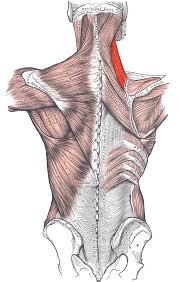
“Why does it travel so?” you ask. Good question! Every muscle has a job of course, and it is important to realize at this point, the levator scapula may actually be MIS-named! What?! That cool name, all for naught! Yes, although it assists in many shoulder actions, according to Rolfer®, anatomist and fascial expert Tom Meyers, it seems the levator scapula’s primary objective is to help stabilize the cervical spine, together with about 12 other muscles. The levator’s job is to prevent the head from going forward, using a stabilized scapula as the base (yet another reason to engage your serratus anterior and stabilize our scapula, friends!). If the scapula isn’t stabilized, as the head falls forward, the scapula, and more of the shoulder girdle will start to get pulled up and forward with it, as it looses the tug-of-war with our ~12 pound head and the power of gravity! The more forward leaning we do, the more this poor muscle gets overstretched, while simultaneously in chronic contraction to support its heavy load. A similar strain is placed on the muscle if we ask those four little anchors on the topside to hoist that heavy bone toward our head, a.k.a. freight elevator (think: carrying a purse or backpack on one shoulder, squeezing a phone up to our ear, or just constant shoulder shrugging); or if we chronically turn our head to one side (hey you, face-down-sleeper who often wakes with that “crick in the neck,” or what about you, with the poorly setup work station that has your monitor off to one side). The more these battles rage on, the more discomfort we’re in.
Typically, we notice pain right at that knot you felt before, or up the neck. But since the levator travels from scapula to neck, and since neighboring muscles and fascia can continue its pain referral pattern beyond the muscle itself, there maybe areas beyond that muscle that are feeling the pain, like in the rhomboids, or onto the humerus.
Read my follow up blog on Friday for some great Yoga Tune Up® therapy for your levator scapula!
Learn about the Yoga Tune Up Therapy Ball Products
Get pain relief solutions for your sore neck


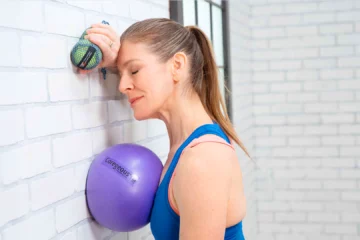
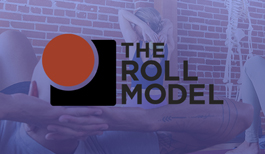



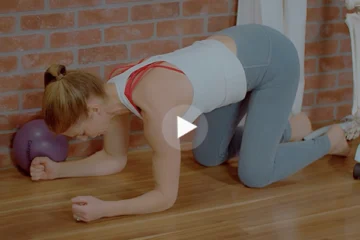
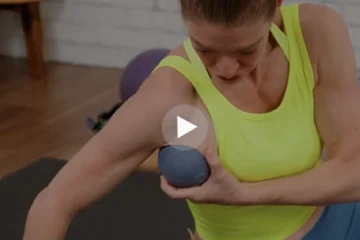


For years I could not get the “crick” out of my neck because I had a bad habit of resting my elbows on my thighs when sitting which caused elevation of my shoulders and shortening my neck. Just the thought of turning my head was tear inducing. Finally, after years of strengthening my shoulders and consciously lengthening my Levator Scapula did I find relief.
Now time to read more blogs about rolling it out:)
Say WHAT? the Levator scapula’s primary job may not be to elevate the scapula, but rather to stabilize the cervical spine? Deeper understanding is dawning! I just got having a stabilized scapula and all that it implies. All of those muscles that attach to the scapula! Thank you for explaining it so clearly.
Fantastic post. Your instructions to palpate the Levator Scapula were spot on. I have had this giant ball in my shoulder and neck for years, and I always thought it was my Trapezius. I can find exactly where the Levator is on my body now, and yes, I have pain in both of the regions you pointed out. Hoping the work on my Serratus Anterior and shoulder girdle stabilization will do the trick!
I loved your description of how to locate this muscle in one’s own body. I often know “about” where certain muscles are, but now I know EXACTLY where levator scapula is in my own body. So helpful!
My levator scapula and I have a somewhat contentious relationship… but if I give it enough attention we’re usually on better terms by the end of the day.
What a great reminder of what those muscles do and how often they are taken for granted. I have a herniated disc in my neck, have a ‘military neck’ and sleep on my stomach. Most of the time i feel i have a tight kink in my neck and use the YTU balls to find the trigger points to find relief.
Interesting article! Now I know what to call the ‘knot’ in my shoulder! When reading the description of the job of the levator scapula, I took notice how I was bending my neck and head forward – no wonder I have a constant knot! Thanks for a very informative post.
I too love this muscle, it’s quite possibly my favourite to roll. I’m a bit of a bag lady – I always have too much to carry between jobs – which with the help of your post explains my forward head position and the crazy crunching as I rolled this out for the first time. I always assumed it was occasional upper trap tension, that was giving me grief, but thanks to yoga tune up and your article, I know exactly how to counteract and perhaps avoid this tension all together.
I appreciated the fact that you went through the process of how to find your levator scapula, I wouldn’t have known, and I wouldn’t have known how to coach other people in finding it. I myself carry a heavy bag with my life in it all the time on one shoulder. Although I try to switch it up at times, I’ll naturally swing it over my right shoulder. I basically walk cocked to one side to support the weight, throwing off my spine alignment, and over working this levator scapula apparently! Reading other comments on your blog highlights some good ideas like a wheeled tote to save this over worked muscle and spine for that matter. Thanks for your informative post, I’m looking forward to knowing a bit about this muscle before I’ve learnt it in my training! A little head start!
I’ve noticed as of late, that a number of my yoga teachers are using wheeled totes or small carry-on luggage with wheels to carry materials to and from class. My guess is that they are protecting their levator scapula by not using it as a hoist as suggested in this post. For the most part, they have postural alignment and gait to die for. Having read your post, I think I should give this a try. Thanks for a well-written and informative article.
This is so well written. It’s very easy for someone who is new to anatomy and understanding the locations of muscles on the body. It’s amazing how people will just have a pain, but never learn what is actually causing the pain. I have had this famous ‘knot’ you speak about and never realized what was causing it. Thank you so much for the clear description of Levator scapula and what it does, and how to find it.
Wow, that gnarly knot is definitely zinging on the right side and I didn’t even know it. Not only is the attachment site of levator scapula tender but the medial border of the scapula where the rhomboids attach as well. It’s time to reevaluate my movement patterns. Thank you for such an eye-opening post and helping me to better understand the role levator scapula plays in stabilization.
Thank you so much for this! really helpful on a Friday evening
to think about how to improve the way I care for this little stabilizing muscle
of mine! looking forward to next week’s blog for your suggestions
WOW great article! Thank you for the clarity
This explains a lot to me. I have scoliosis and my right should blade tends to wing out and is less stable. I have also had neck stability problems as well. This blog is really helpful in showing me the connections of functioning together. Quite a few “lightbulbs” went off in my head while reading this, and I’m not even done with my first cup of coffee! Look forward to the next one.